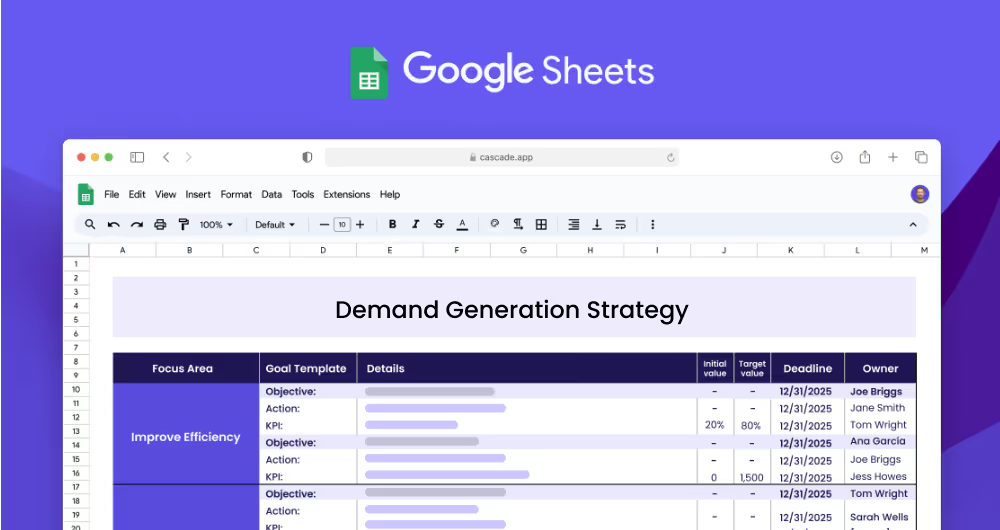A demand generation strategy is a plan created by marketing teams to increase the demand for their product or service. It typically involves identifying target audiences and developing strategies to reach them, increasing conversion rates, and building customer loyalty. The end goal is to increase sales and revenue.
Each focus area has its own objectives, projects, and KPIs to ensure that the strategy is comprehensive and effective.
This demand generation strategy template is designed for marketing teams of all sizes and industries to create a comprehensive strategy that will help them to generate more demand for their product or service. It can be adapted to fit any type of marketing goal or strategy.
Focus areas are the broad topics or goals that you want to focus on when developing your demand generation strategy. Examples of focus areas could include increasing sales revenue, generating leads, and improving customer retention. Each focus area should have clear objectives, measurable targets (KPIs), and projects (actions) to achieve those targets.
Objectives are the specific goals or outcomes that you want to achieve for each focus area. Objectives should be specific, measurable, achievable, relevant and time-bound (SMART). For example, an objective for increasing sales revenue could be to “Increase reach of target audience”, while the objective for generating leads could be “Increase lead volume”.
KPIs, or Key Performance Indicators, are measurable targets that you set for each objective. They should be specific, measurable, achievable, and time-bound. For example, a KPI for the objective “Increase reach of target audience” could be to “Increase reach from 10,000 to 50,000 people”. KPIs help to track progress and measure the effectiveness of your strategy.
Projects, or actions, are the activities that need to be completed in order to achieve the KPIs set for each objective. For example, if the objective is “Increase conversion rate”, then a related project could be “Optimize landing page”. Projects should be specific, achievable, relevant and time-bound.
If you’re ready to accelerate your strategy and drive tangible results, choose Cascade Strategy Execution Software. Move beyond the confines of traditional spreadsheets, which can hamper real-time collaboration and dynamic updates. Cascade enhances your strategy execution by integrating planning with real-time tracking, giving you the power to swiftly adapt and stay aligned across multiple teams. Sign-up for free or book a demo with one of our strategy experts today!


